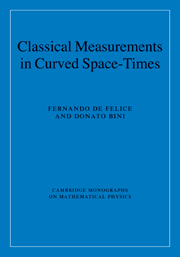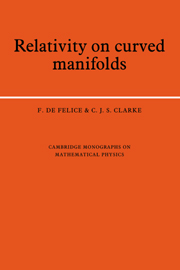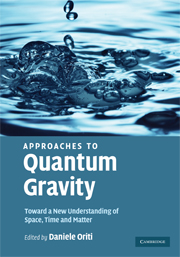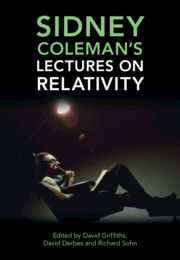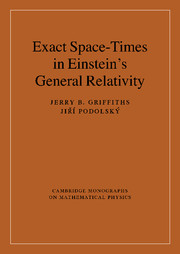Classical Measurements in Curved Space-Times
The theory of relativity describes the laws of physics in a given space-time. However, a physical theory must provide observational predictions expressed in terms of measurements, which are the outcome of practical experiments and observations. Ideal for readers with a mathematical background and a basic knowledge of relativity, this book will help readers understand the physics behind the mathematical formalism of the theory of relativity. It explores the informative power of the theory of relativity, and highlights its uses in space physics, astrophysics and cosmology. Readers are given the tools to pick out from the mathematical formalism those quantities that have physical meaning and which can therefore be the result of a measurement. The book considers the complications that arise through the interpretation of a measurement, which is dependent on the observer who performs it. Specific examples of this are given to highlight the awkwardness of the problem.
- Provides a large sample of observers and reference frames in space-times that can be applied to space physics, astrophysics and cosmology
- Tackles the problems encountered in interpreting measurements, giving specific examples
- Features advice to help readers understand the logic of a given theory and its limitations
Reviews & endorsements
"In simple language, the authors manage not only to exhibit the subtle correlations amongst those key characteristics but also to provide a concise framework of a general methodology on the subject, flavoured by specific applications and examples. As a result, the book contains a collection of many important general and special results that, perhaps, are not readily available in the literature. The excellent and up-to-date catalogue of references reinforces the value of the book. It will be of great value to anyone who would like to see how a physical theory approaches reality."
Georgios O. Papadopoulos, Mathematical Reviews
Product details
September 2010Hardback
9780521889308
328 pages
254 × 182 × 23 mm
0.74kg
14 b/w illus. 1 table 80 exercises
Available
Table of Contents
- 1. Introduction
- 2. The theory of relativity: a mathematical overview
- 3. Space-time splitting
- 4. Special frames
- 5. The world function
- 6. Local measurements
- 7. Non-local measurements
- 8. Observers in physical relevant space-times
- 9. Measurements in physically relevant space-times
- 10. Measurements of spinning bodies.

